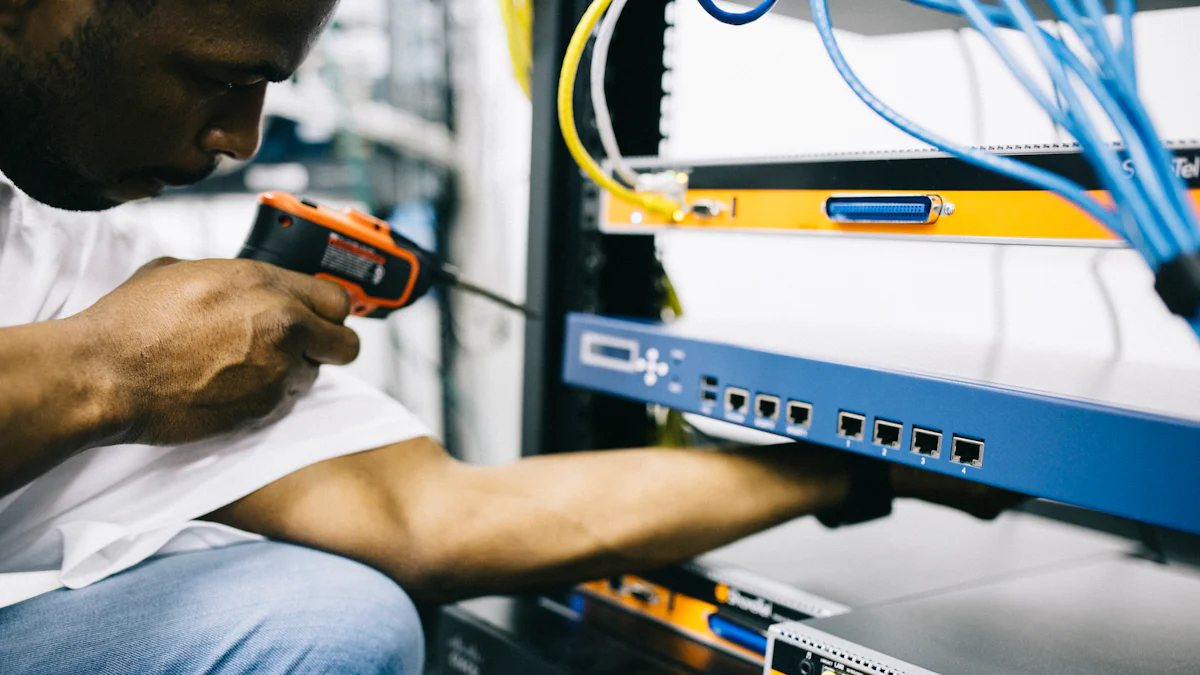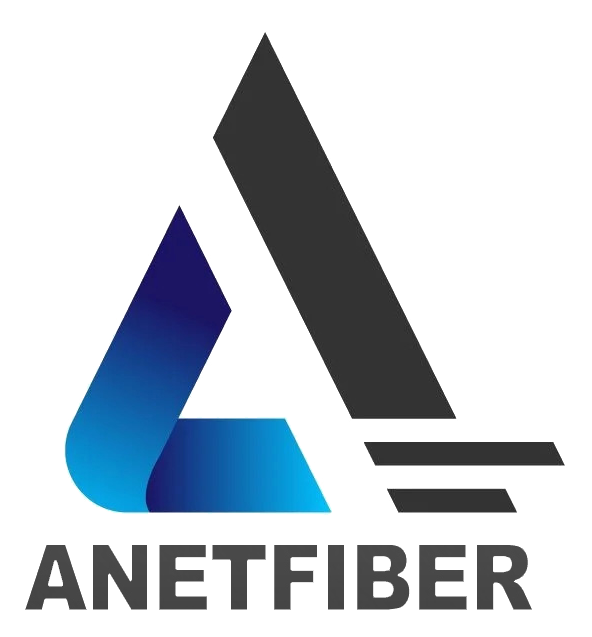8 Essential Fiber-Optic Test Equipment for Cable Maintenance and Testing

Introduction to Fiber Optic Testing and Maintenance
Fiber optic technology has revolutionized the way data is transmitted, offering high-speed and reliable connectivity for various applications. However, to ensure the optimal performance and longevity of fiber optic networks, regular maintenance and testing are essential.
The Importance of Regular Testing and Maintenance
Regular maintenance and testing of fiber optic cables are crucial for identifying potential issues before they escalate into major problems. By conducting routine checks, technicians can detect faults such as signal degradation, breaks, or bends in the cables. This proactive approach helps in preventing unexpected network outages and ensures uninterrupted data transmission.
Overview of Fiber Optic Testing and Maintenance Process
The process of fiber optic testing involves a series of procedures aimed at evaluating the integrity and performance of the cables. This includes inspecting connectors for dirt or damage, measuring optical power levels, analyzing signal loss, and identifying any return loss. On the other hand, fiber optic cable maintenance encompasses activities such as cleaning connectors, repairing damaged cables, and implementing preventive measures to uphold the overall health of the network.
Understanding Fiber Optic Cable Testing Methods
When it comes to ensuring the reliability and performance of fiber optic networks, employing effective testing methods is imperative. Several advanced techniques are utilized for comprehensive evaluation, including Optical Time-Domain Reflectometer (OTDR) testing, Optical Power Meter testing, and Insertion Loss testing.
Optical Time-Domain Reflectometer (OTDR) Testing
OTDR testing is a fundamental method for assessing the integrity of fiber optic cables. This technique operates by emitting optical pulses into the cable and measuring the reflected light to determine the cable's characteristics. By analyzing the time and intensity of these reflections, technicians can pinpoint issues such as breaks, bends, or splice losses within the cable.
How OTDR Works
An OTDR sends short pulses of light into the fiber and measures the backscattered or reflected light. It then plots a graph of signal strength against time, providing valuable insights into the cable's attenuation and identifying any anomalies along its length.
Interpreting OTDR Results
Interpreting OTDR results requires expertise in analyzing graphical representations of signal loss and reflections within the cable. Technicians can identify events such as connectors, splices, or macro-bends that may impact signal transmission quality.
Optical Power Meter Testing
Optical Power Meters play a crucial role in measuring the power levels within fiber optic cables, ensuring that they operate within specified parameters. These devices accurately quantify optical power levels to guarantee optimal network performance.
The Role of Optical Power Meters
Optical power meters are essential for verifying that transmitted power aligns with industry standards, enabling technicians to detect any deviations that could affect data transmission quality.
Conducting Accurate Power Measurements
Technicians conduct precise power measurements by connecting the optical power meter to the cable and recording the received power level. This process aids in identifying potential issues related to signal strength and overall network health.
Insertion Loss Testing
Insertion loss testing is employed to evaluate how much signal strength is lost when light is inserted into a fiber optic system. This assessment is critical for determining overall system performance and identifying potential areas of improvement.
Understanding Insertion Loss
Insertion loss refers to the reduction in optical power resulting from connectors, splices, or other components within a fiber optic system. Minimizing insertion loss is essential for maintaining efficient data transmission across the network.
Performing Insertion Loss Tests
Technicians perform insertion loss tests using specialized equipment to measure signal attenuation at various points along the cable infrastructure. These tests provide valuable insights into system performance and aid in optimizing network efficiency.
Return Loss Testing
In fiber optic networks, return loss testing is a critical measure of the amount of light that is reflected back toward the source due to impedance mismatches or discontinuities in the cable. It is an essential parameter for assessing the quality of signal transmission and ensuring minimal signal loss within the network.
What is Return Loss?
Return loss refers to the ratio of the power of the transmitted signal to the power of the reflected signal, typically expressed in decibels (dB). A higher return loss value indicates better signal quality, as it signifies that less light is being reflected back towards the source. This measurement is crucial for maintaining efficient data transmission and minimizing disruptions within the network.
How to Measure Return Loss
To measure return loss, technicians utilize specialized equipment known as optical time-domain reflectometers (OTDRs) or reflectometers. These devices emit a test signal into the fiber optic cable and analyze the strength and characteristics of any reflections that are returned. By comparing the transmitted and reflected signals, technicians can calculate the return loss value, providing insights into signal integrity and potential areas for improvement within the network.
Return loss testing plays a vital role in ensuring optimal network performance by identifying impedance mismatches and irregularities that could lead to signal degradation. By conducting regular return loss tests, technicians can proactively address any issues affecting signal quality, thereby enhancing overall network reliability.
Key Equipment for Fiber Optic Cable Maintenance
Fiber optic cable maintenance is a critical aspect of ensuring the longevity and optimal performance of fiber optic networks. To effectively maintain these intricate systems, technicians rely on a range of specialized equipment designed to facilitate preventive maintenance, conduct thorough cable inspections, and perform necessary repairs.
Preventive Maintenance for Fiber Cables
Scheduled Inspections
Regular scheduled inspections are fundamental to preemptively identify potential issues within fiber optic networks. Technicians adhere to predefined inspection schedules, systematically evaluating the condition of cables, connectors, and associated components. These routine assessments enable early detection of anomalies or signs of wear, allowing for timely intervention to prevent any disruptions in network operations.
Cleaning Fiber Connectors
Cleaning fiber connectors is an essential preventive maintenance task that helps mitigate signal loss and degradation. Technicians utilize specialized cleaning tools and solutions to remove dust, dirt, and other contaminants from connector end faces. By maintaining clean connectors, the risk of signal interference or attenuation due to impurities is minimized, ensuring consistent data transmission quality.
Cable Inspection Procedures
Visual Inspection Tools
Visual inspection tools such as fiber scopes and inspection microscopes are employed to meticulously examine the condition of fiber optic cables. These tools enable technicians to visually inspect connector end faces for scratches, cracks, or contamination that could compromise signal integrity. Through visual inspections, any potential issues can be promptly identified and addressed before they escalate into larger problems.
Automated Inspection Equipment
In addition to manual visual inspections, technicians also utilize automated inspection equipment such as fiber end-face inspection systems. These advanced tools employ high-resolution imaging technology to automatically scan connector end faces for defects or impurities. By leveraging automation, technicians can efficiently conduct comprehensive inspections with precision and accuracy.
Fiber Optic Cable Repair
Repair Kits and Tools
Equipped with specialized repair kits containing cleaning supplies, adhesives, polishing films, and precision tools, technicians are prepared to address various repair needs promptly. These kits provide the necessary materials and instruments for repairing damaged cables or connectors on-site without compromising network performance.
Splicing Damaged Cables
In instances where fiber optic cables sustain damage beyond simple repairs, technicians resort to splicing techniques using fusion splicers or mechanical splicing devices. Splicing involves joining two fiber ends together using precise alignment methods to restore connectivity. This meticulous process ensures minimal signal loss at the splice point while effectively resolving cable damage issues.
Troubleshooting Common Fiber Optic Cable Issues
When it comes to cable troubleshooting techniques in fiber optic networks, technicians employ a systematic approach to identify and address common problems that may affect network performance. By utilizing specialized test equipment and adhering to best practices, they can effectively troubleshoot issues and ensure the seamless operation of the network.
Cable Troubleshooting Techniques
Identifying Common Problems
Technicians are trained to recognize a range of common issues that can impact fiber optic cables. These may include signal degradation due to connector contamination, fiber breaks or bends, excessive signal loss, or irregularities in power levels. By understanding the potential sources of disruptions, technicians can swiftly pinpoint and resolve these issues.
Using Test Equipment for Troubleshooting
Utilizing advanced fiber-optic test equipment is integral to the troubleshooting process. Devices such as optical time-domain reflectometers (OTDRs), optical power meters, and insertion loss testing tools enable technicians to conduct comprehensive assessments of cable integrity and performance. Through precise measurements and analysis provided by this equipment, technicians can accurately diagnose issues and implement targeted solutions.
Practical Tips for Effective Troubleshooting
Keeping Detailed Records
Maintaining comprehensive records of maintenance activities, test results, and identified issues is essential for effective troubleshooting. Detailed documentation allows technicians to track the history of cable inspections, repairs, and performance evaluations. This historical data serves as a valuable reference when addressing recurring problems or assessing long-term network health.
Regular Training on New Technologies
Staying abreast of advancements in fiber optic technology through regular training programs is crucial for enhancing troubleshooting capabilities. As new testing methods and equipment are introduced, ongoing education ensures that technicians are equipped with the knowledge and skills needed to effectively troubleshoot emerging challenges within fiber optic networks.
Ensuring Long-Term Fiber Optic Cable Health
As fiber optic networks continue to serve as the backbone of modern communication systems, ensuring their long-term health and performance is paramount. This involves not only addressing immediate maintenance needs but also implementing strategies for sustained reliability and longevity.
The Role of Regular Maintenance in Cable Longevity
Regular maintenance plays a pivotal role in preserving the longevity of fiber optic cables. By adhering to scheduled cleaning, inspection, and testing protocols, technicians can proactively identify and address potential issues before they escalate. This preventive approach minimizes the risk of signal degradation, breakages, or other faults that could compromise the network's long-term health.
Advanced Techniques for Cable Health Monitoring
In addition to routine maintenance practices, advanced techniques for cable health monitoring further contribute to the overall well-being of fiber optic networks.
Remote Monitoring Systems
Remote monitoring systems leverage cutting-edge technology to provide real-time insights into the performance and condition of fiber optic cables. These systems enable continuous surveillance of key parameters such as signal strength, power levels, and environmental factors that may impact cable integrity. By remotely monitoring these critical metrics, technicians can promptly detect anomalies and take proactive measures to uphold cable health.
Predictive Maintenance Strategies
Predictive maintenance strategies utilize data-driven approaches to anticipate potential issues within fiber optic networks. By analyzing historical performance data and employing predictive algorithms, technicians can forecast maintenance needs and preemptively address areas of concern. This proactive strategy minimizes downtime, reduces the likelihood of unexpected failures, and ultimately contributes to the long-term health and stability of the network.
See Also
Optical Fiber Cable Installation: 5 Crucial Techniques
Optical Fiber Cable: 5 Vital Installation Techniques
Explaining the Construction of Fiber Optic Cable Components


